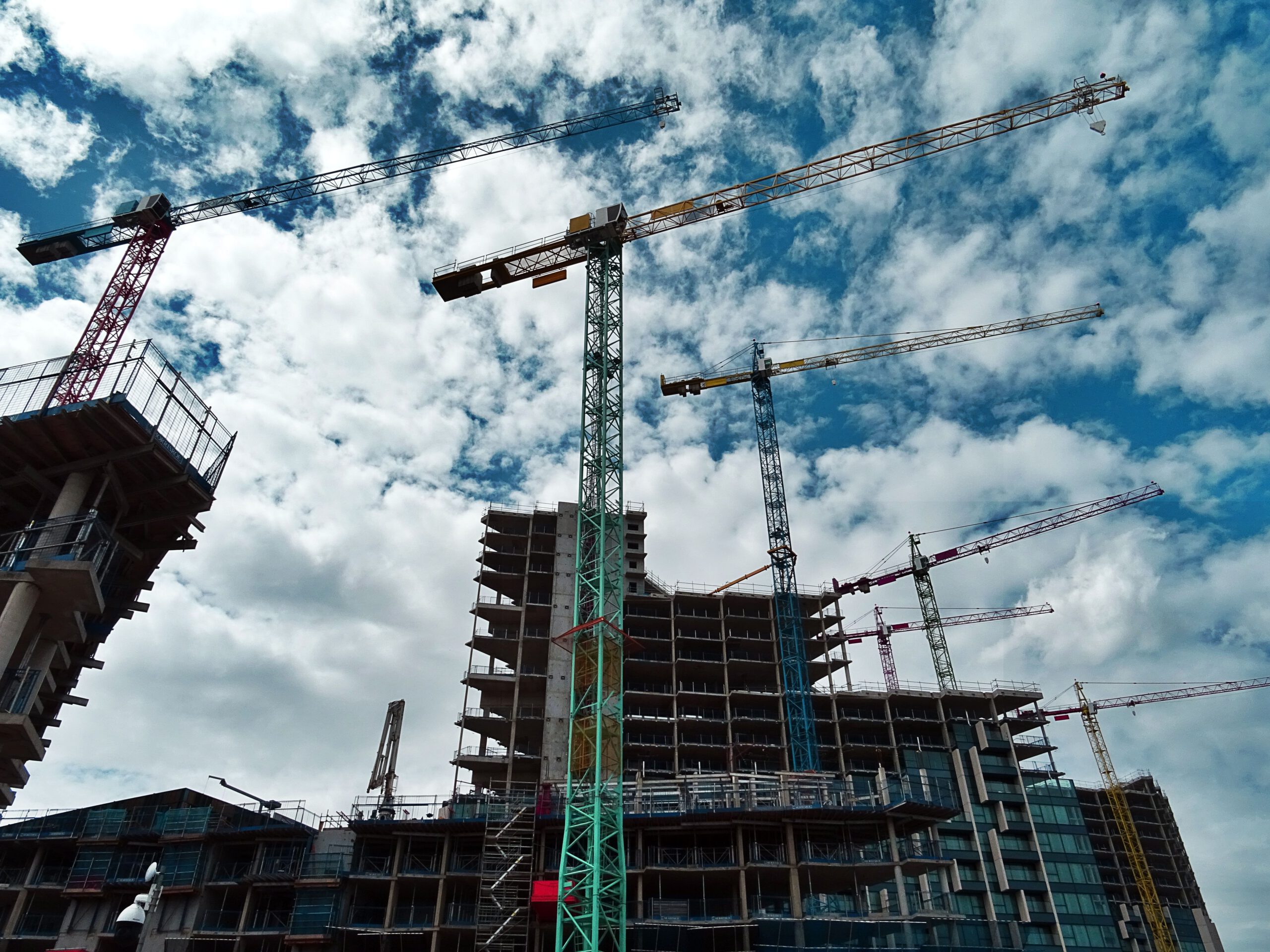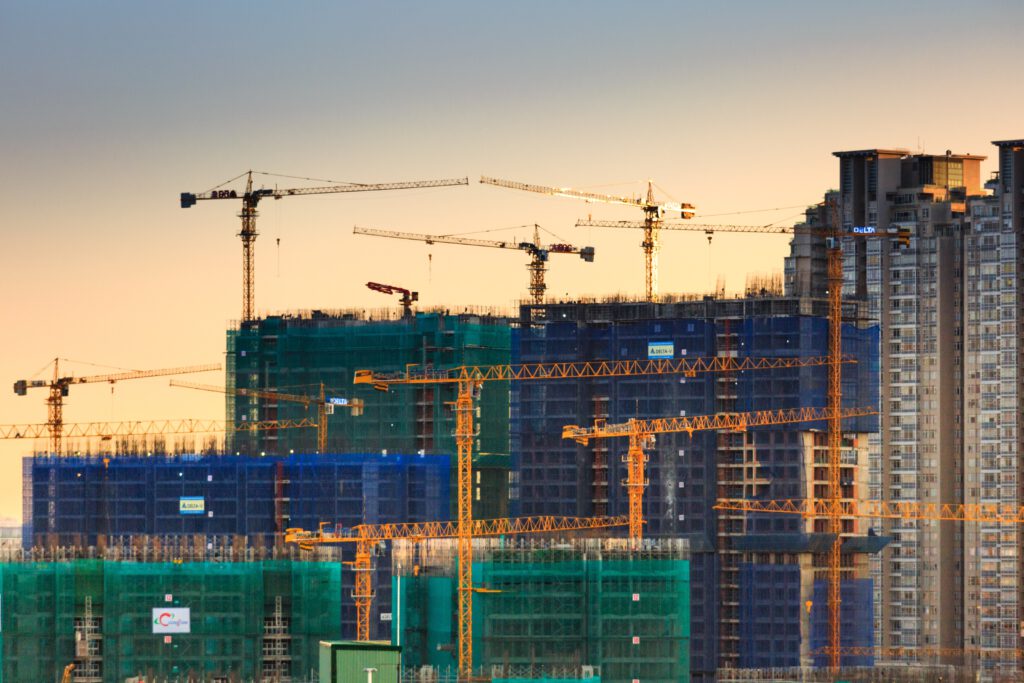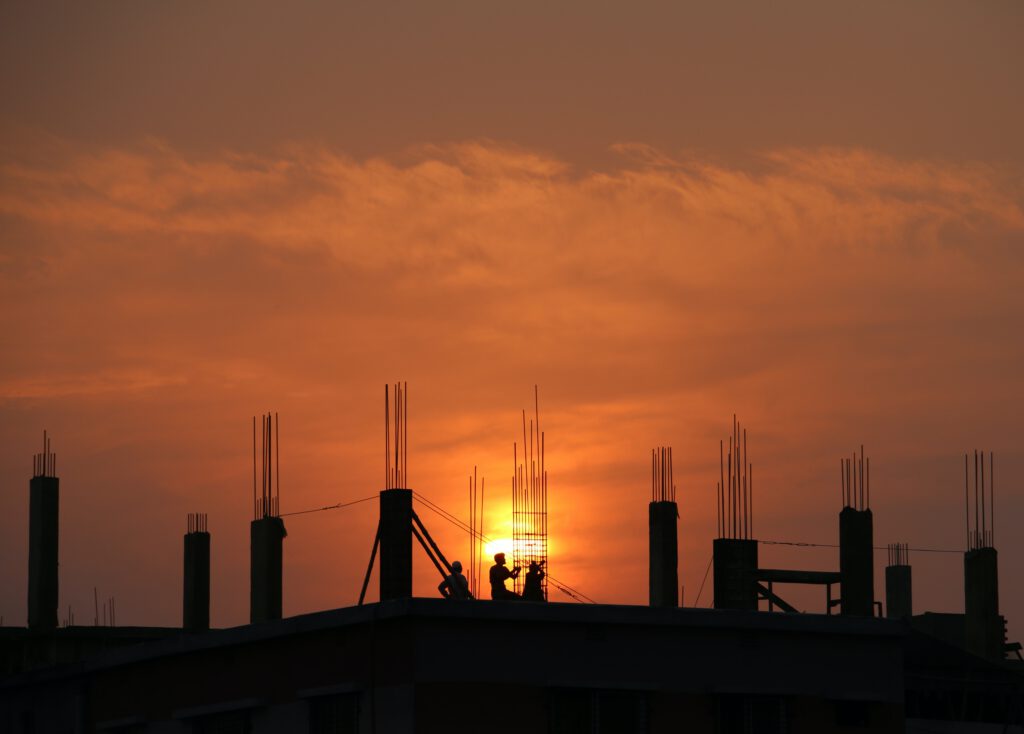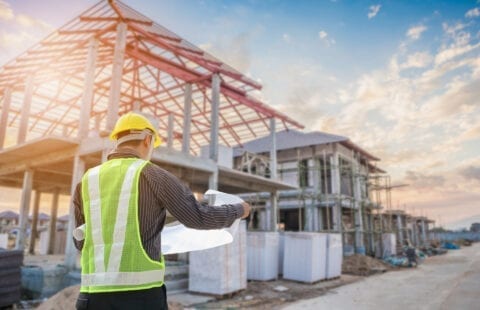
What is Commercial Construction?
From a distance, construction can appear simple. Buy the materials, put them together, and voila, completed project, right? If only life could be that simple. Commercial construction has multiple processes going on behind the scenes. To learn about steps that go into a commercial construction project, you need to know what commercial construction is. Commercial construction refers to projects that are sold or leased in the private sector. These projects can have a variety of purposes, like restaurants, hotels, office buildings, warehouses, grocery stores, or shopping centers.

Commercial, Industrial, and Residential
What makes a commercial project different from a residential or industrial project? Residential buildings are built with wood frames. They are made with a living space as the expected end use, unlike commercial buildings.
Commercial and industrial buildings use metal beams to handle the larger weight. Commercial buildings are consumer facing and used to make money. This makes them unique. They need to look nice and hold customers, but also have function like an industrial building.
Industrial buildings are not consumer facing. They are built for making products, not selling products. All three are vital to the construction industry, but today’s look behind the curtain focuses on commercial construction.
Project Sizes
Commercial construction is not always building from the ground up. Project sizes vary from small to large.
Small projects mostly make changes to the building within the existing structure. Replacing the flooring or rewiring the electricity in a building are good examples. Small projects can be finished with a small team in less than a few months.
Medium projects can expand the existing structure of the building. An example of a medium project would be adding on a new office space or changing the exterior of an entire building. Medium projects can take months to a year.
Large projects usually consist of building from the ground up. As the size of the project increases, the amount of time and manpower increase. Large projects can take years to complete and require cooperation between multiple teams.
Who Does The Work?
How do you decide who to use for your project? A general contractor can do small projects. Medium projects may require more hands, so a general contractor may subcontract more people to fill specific positions. Large projects require multiple teams of contractors, plumbers, electricians, and construction workers to ensure the project is finished. Contractors may also place “bids” for the job. Bids show that a contractor is interested in the project. Bids include building blueprints, cost and material estimates, and time tables. Weather is also factored into bids, as it can quickly increase costs and job time. Bids give the customer a glimpse of what each contractor expects from the job.

Zoning Requirements
Zoning can be a roadblock for commercial construction projects. Zoning is a method of city planning that lays out zones for different types of regulations. For example, you can’t build a 15 story hotel in the center of a residential area. Zoning codes give the contractor a better understanding of what kind of building can be built on that land. Zoning isn’t always set in stone. If a building is for the greater good of the area, zoning rules can be bent.
When zoning for commercial builds, the focus shifts from residential issues to more commercial problems, like parking lots and building safety.
Commercial zoning has a few rules specific to commercial structures. Floor area ratio considers the complete floor area against the plot of land the building is on. Lot coverage is similar, but it doesn’t factor in the square footage of individual floors, only how much of the land is actively covered by building. There is a minimum ratio of parking spaces to square feet, typically a ratio of 5. Commercial buildings also must have fire escapes and emergency exits based on building size and height.
Commercial construction projects have many moving parts behind the scenes. The coordination of zoning laws, multiple working teams, bids, project sizes, all come together to create large scale projects. Unlike residential and industrial buildings, commercial buildings are usually made of steel and are consumer facing.
If you’re looking for a full service construction company in Rhode Island, check out Sole Source Construction. We are equipped to handle the entire construction process, from design to construction.


